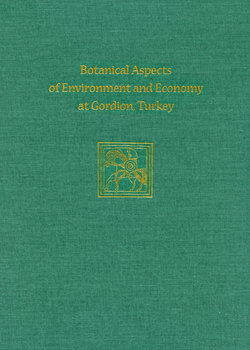Читать книгу Botanical Aspects of Environment and Economy at Gordion, Turkey - Naomi F. Miller - Страница 7
ОглавлениеIllustrations
Sheep grazing near Gordion with the Citadel mound in the background
| 1.1 | Excavation units 1988/1989, three burnt buildings |
| 2.1 | Sakarya Valley and Gordion region |
| 2.2 | Polatli climate diagram |
| 2.3 | Polatli precipitation, by growing season (July–June), 1929 to 2007 |
| 2.4 | Vegetation in the immediate environs of Gordion |
| 2.5 | Woodland vegetation in the Gordion region |
| 3.1 | Density distribution of charred material |
| 4.1 | Major charcoal types (weighted percent) |
| 4.2 | Ubiquity (percent) of major charcoal types |
| 4.3 | Comparison of percent by weight, count, and ubiquity for the major types |
| 5.1 | Median density according to deposit type |
| 5.2 | Median charred material density |
| 5.3 | Triticum rachis fragments |
| 5.4 | Einkorn (Triticum monococcum) and emmer (Triticum dicoccum) percent of total wheat grain and rachis segments |
| 5.5 | Rachis fragments |
| 5.6 | Hordeum, Triticum aestivum/durum, Vicia ervilia, Lens, insects that infest Lens |
| 5.7 | Proportions of wheat and barley |
| 5.8 | Setaria italica relative to Triticum aestivum/durum and Hordeum vulgare |
| 5.9 | Pistachio (Pistacia) |
| 5.10 | Flax (Linum usitatissimum) |
| 5.11 | Ubiquity of crops |
| 5.12 | Ubiquity of plants of steppe |
| 5.13 | Ubiquity of plants of moist areas |
| 5.14 | Ubiquity of plants of disturbance |
| 5.15 | Ubiquity of other common taxa |
| 5.16 | Comparison of measures of seeds to wood charcoal |
| 5.17 | Distribution of values of wild:cereal |
| 5.18 | Wild:cereal (% of samples by value) |
| 5.19 | Mean and median wild:cereal |
| 5.20 | Common types (Trigonella and Galium) (percent of total number of seeds per period) |
| 5.21 | Plants of overgrazed steppe (percent of total number of seeds per period) |
| 5.22 | Ruderal plants (percent of total number of seeds per period) |
| 5.23 | Galium, ruderal, overgrazed, combined (percent of total number of seeds per period) |
| 5.24 | Floodplain types (percent of total number of seeds per period) |
| 5.25 | Indicators of irrigation and streamsides (percent of total number of seeds per period) |
| 6.1 | Major food mammals |
| 6.2 | Caprids, herder animals, and wild:cereal |
| A.1 | Flotation sample data sheet example |
| D.1 | Apiaceae |
| D.2 | Apiaceae |
| D.3 | Asteraceae |
| D.4 | Asteraceae |
| D.5 | Brassicaceae, Caryophyllaceae |
| D.6 | Chenopodiaceae, Cyperaceae, Polygonaceae |
| D.7 | Polygonum, Thlaspi, Brassicaceae, Eremopyrum |
| D.8 | Dipsacaceae, Euphorbiaceae, Fabaceae |
| D.9 | Geraniaceae, Lamiaceae, Papaveraceae |
| D.10 | Poaceae |
| D.11 | Poaceae |
| D.12 | Frequency of widths of Stipa seeds according to shape |
| D.13 | Poaceae, Primulaceae, Ranunculaceae, Salsola |
| D.14 | Rubiaceae, Scrophulariaceae, Solanaceae, Verbenaceae, Zygophyllaceae, Unknowns |
| D.15 | Unknowns, Beta |
